
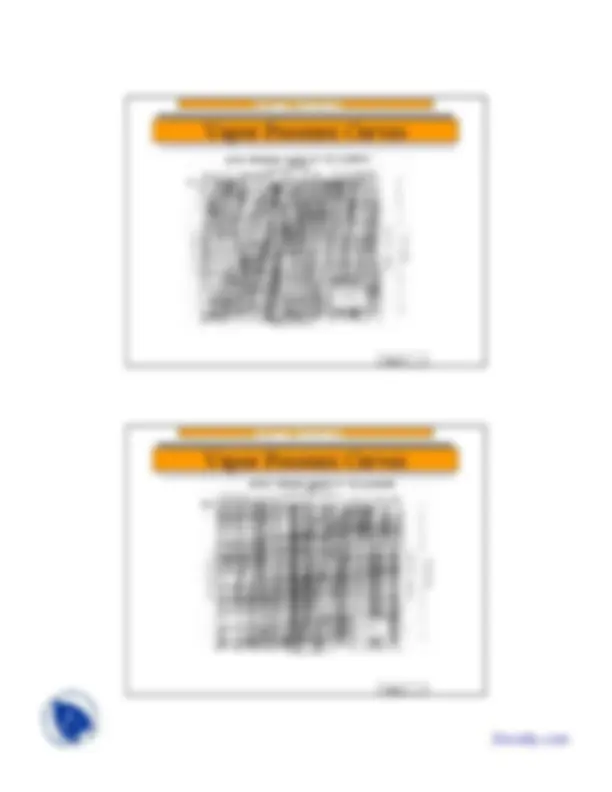
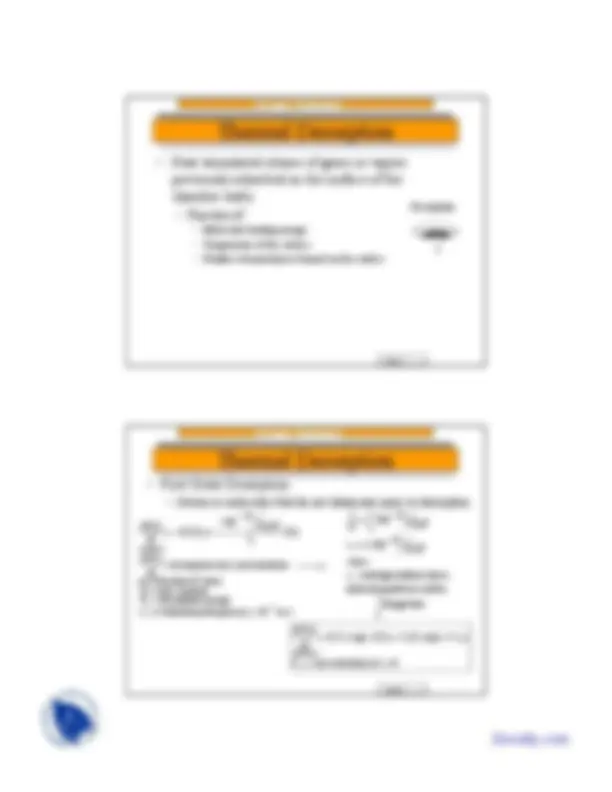
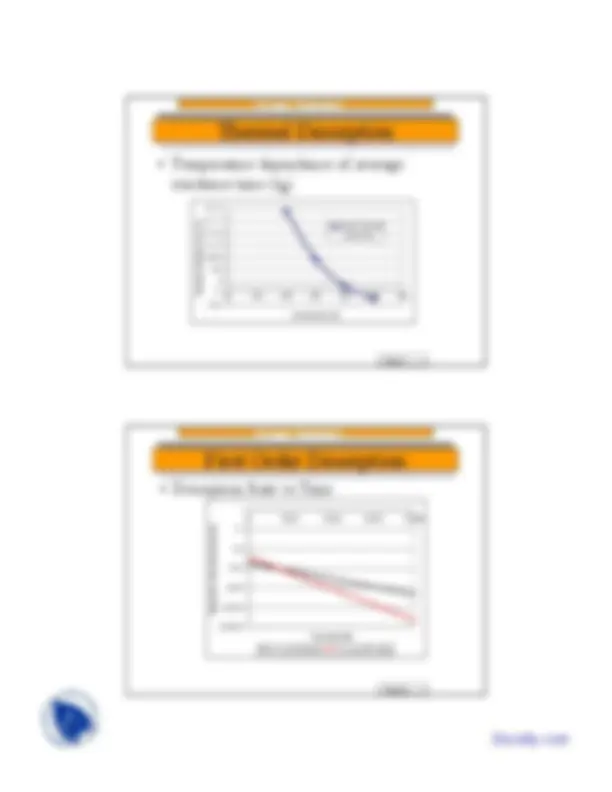
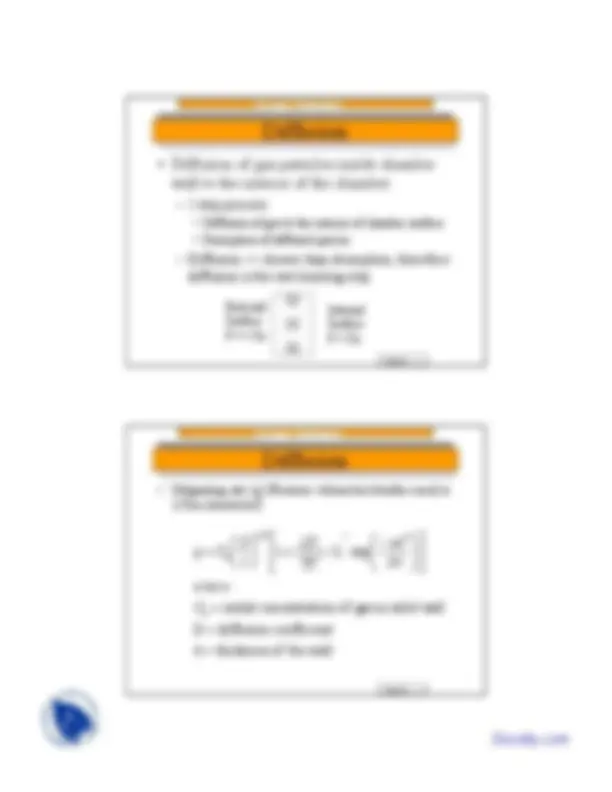
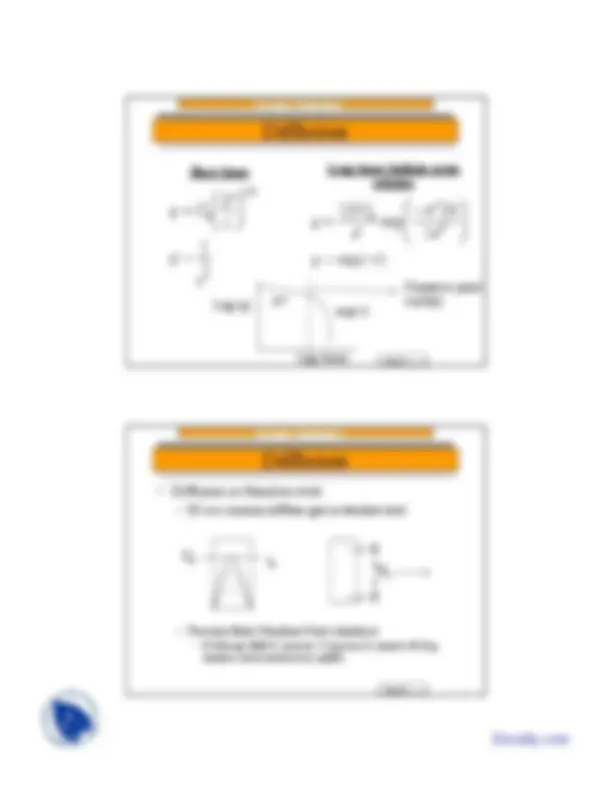
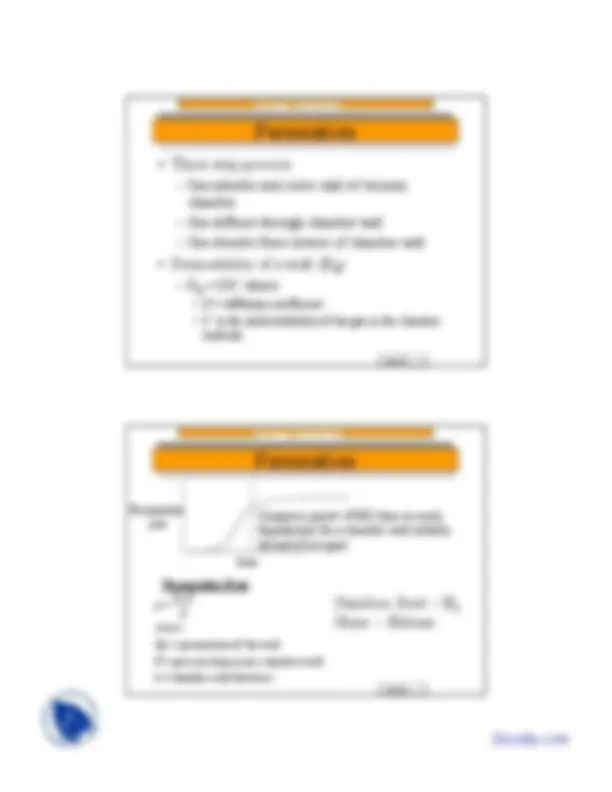


Study with the several resources on Docsity

Earn points by helping other students or get them with a premium plan


Prepare for your exams
Study with the several resources on Docsity

Earn points to download
Earn points by helping other students or get them with a premium plan
Community
Ask the community for help and clear up your study doubts
Discover the best universities in your country according to Docsity users
Free resources
Download our free guides on studying techniques, anxiety management strategies, and thesis advice from Docsity tutors
These are the Lecture Slides of Thin Film Materials Processing which includes Vaporization, Vapor Pressure Curves, Thermal Desorption, Molecular Binding Energy, First Order Desorption, Desorption Rate, Real Surfaces, Diffusion of Gas Particles etc. Key important points are: Gas Sources in Vacuum, Vaporization, Vapor Pressure Curves, Thermal Desorption, Molecular Binding Energy, First Order Desorption, Desorption Rate, Real Surfaces, Diffusion of Gas Particles
Typology: Slides
1 / 11

This page cannot be seen from the preview
Don't miss anything!







Page 1
Vacuum Technology
Page 2
Permeation Real leak
Virtual leak
Vaporization
Desorption
Diffusion
Page 3
1 / 2
π
Vaporization
Vacuum Technology
Page 4
Page 7
Desorption
Vacuum Technology
Page 8
1/vibrationalfrequency(~ 10 sec)
desorptionenergy
rate constant
asafunctionoftime)
desorptionrate(concentration
exp ()
1
0
0 1
τ
τ
D
D
dt
dCt
where
Ct NkT
KCt dt
dCt
moleculespendsona surface
averageresidencetimea
:
exp
(^11) exp
R
(^00)
1 0 0
=
= −
= −
τ
τ τ
τ
where
NkT
E
NkT
E K
R D
D
Integration
C concentrationat t 0
exp( ) exp( / )
0
1 0 1 0 1
= =
where
KC Kt CK t dt
dC t
Page 9
10
1000
100000
1E+
1E+
1E+
1E+
0 100 200 300 400 500 600
Temperature (K)
Average residence time (s)
H2O-metal ( MJ/kg-mol)
Vacuum Technology
Page 10
1 0 50000 100000 150000 200000
Time (seconds)
Desorption rate (molecules/sec)
1st order BE=96MJ 1st order BE=192MJ
Page 13
1 0 50000 100000 150000 200000
Time (seconds)
Desorption rate (molecules/sec)
1st order BE=96MJ 1st order BE=192MJ 2nd order BE=96MJ 2nd order BE=192MJ
Vacuum Technology
Page 14
Surface (^) Surface Surface
Page 15
External Surface P >> Co
Internal Surface P < Co
Vacuum Technology
Page 16
{(Torr-liters/s)/m^2 ]
0
1 / (^22)
0
=∞
=
n n
n o
Page 19
Vacuum Technology
Page 20
Permeation
rate
time
Crossover point= d^2 /6D (time to reach Equilibrium for a chamber wall initially devoid of any gas)
Permeation Rate
Page 21
Volume ~ exp(-t)
Outgassing ~ t-
Diffusion ~ t-1/ Permeation